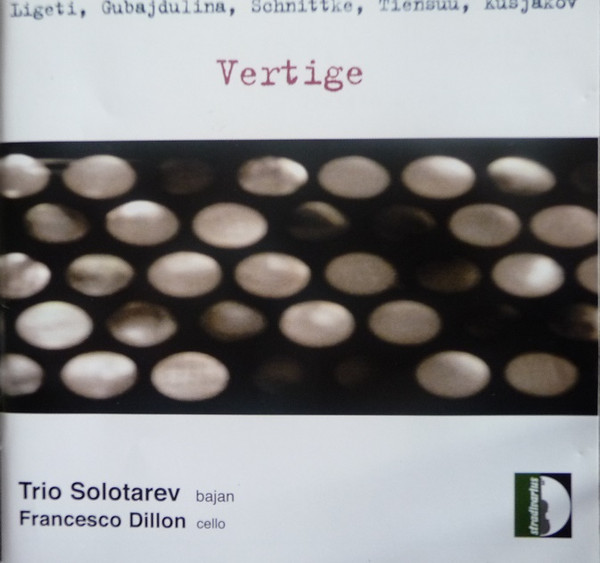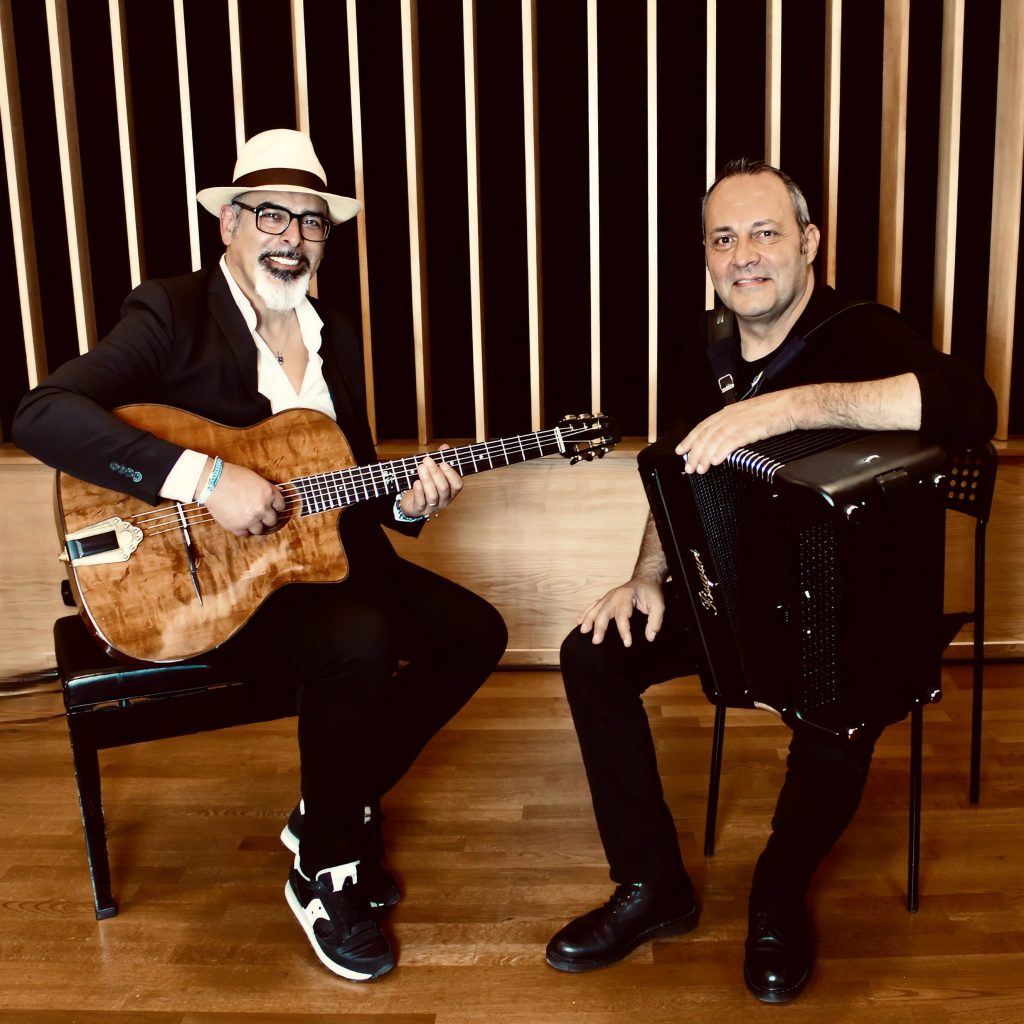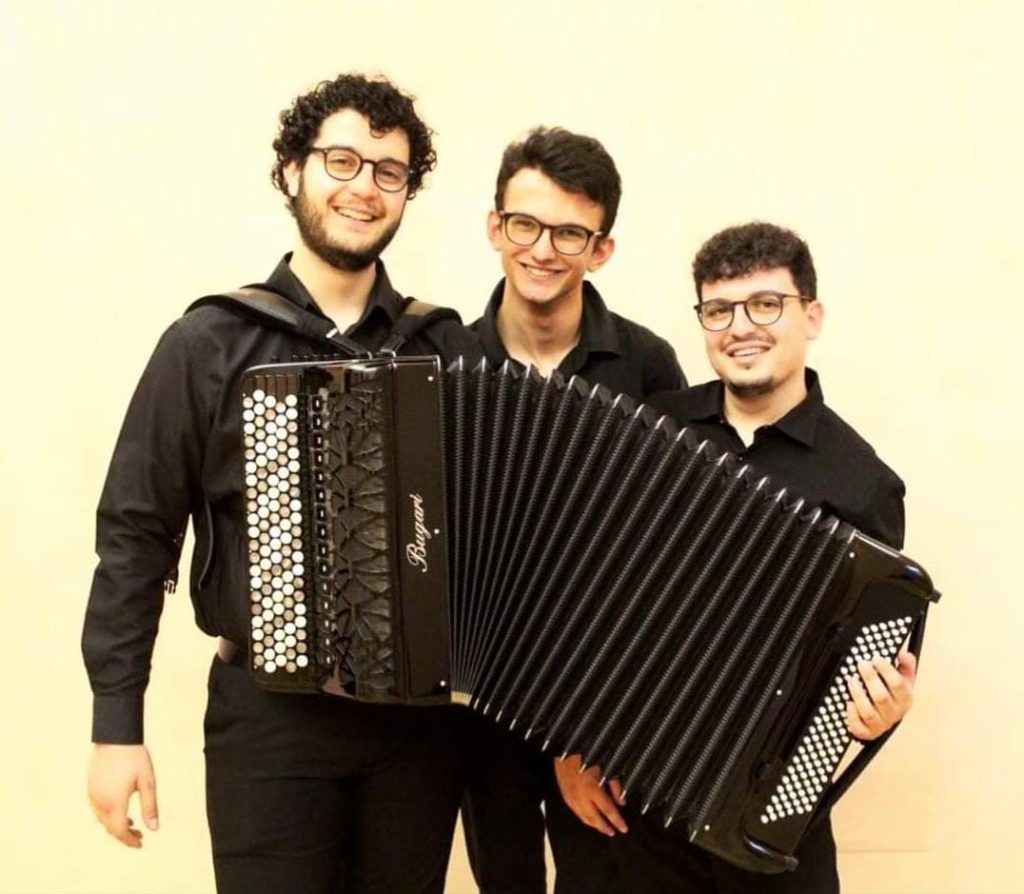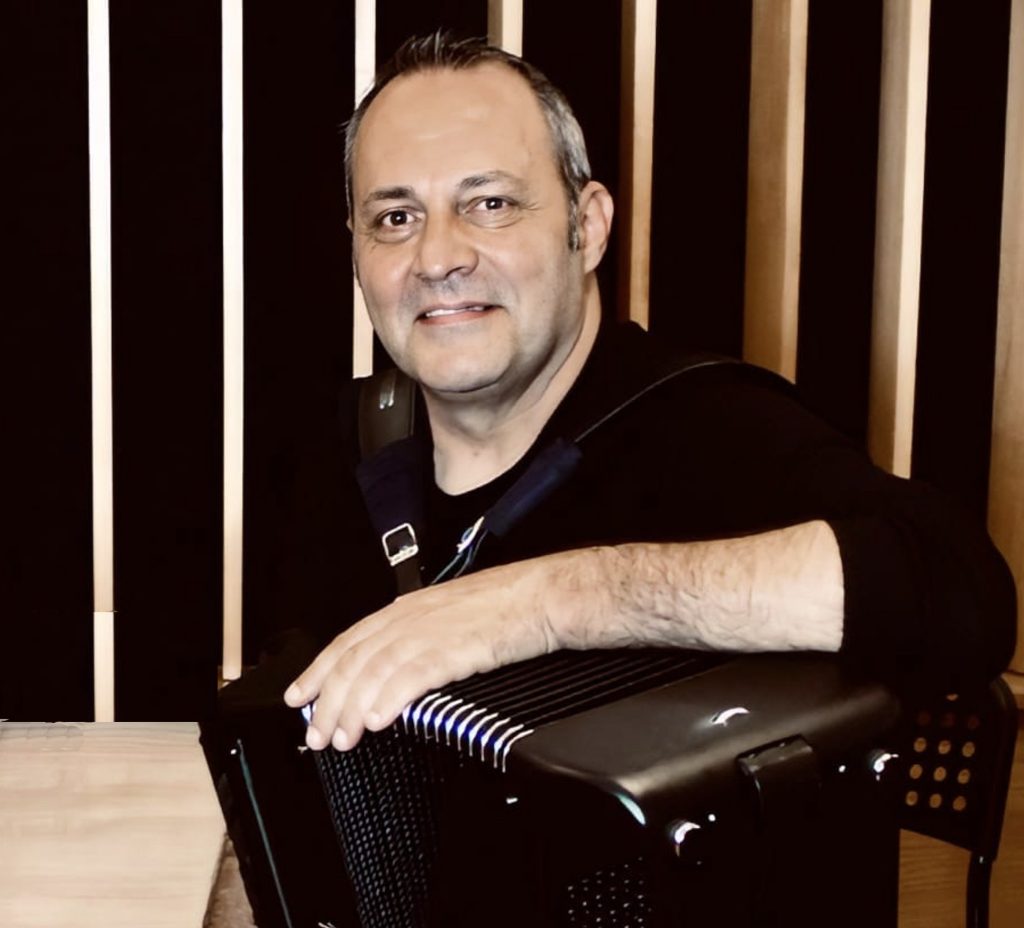
This interview was edited by Adele Pirozzolo
A Family Passion Turned into a Lifelong Profession
Walter Di Girolamo discovered the accordion thanks to his father, fascinated as a child by the movement of the bellows opening and closing, producing sounds that conveyed both joy and melancholy. From that moment on, learning the instrument became an integral part of his life: from private lessons to his diploma from the Conservatory of Rome, including experiences abroad and collaborations with expert craftsmen. Today, as a teacher at the Potenza Conservatory, he shares this passion with his students, transmitting not only technical skills but also a deep love for an instrument still not fully recognized in the academic world.
1. You chose the accordion at a time when it wasn’t yet considered an “academic” instrument like others. What motivated your choice, and how did you experience those early years of study?
I chose to play the accordion because my father played it by ear at home, and I was fascinated by the bellows’ movement from a very young age. At the time, it wasn’t considered an academic instrument, but as an eleven-year-old boy captivated by its melancholic yet joyful sound, I didn’t let that stop me.
2. How did your teachers influence your journey? You studied with Massimiliano Pitocco and Claudio Jacomucci. Can you tell us more about your education? Was there a moment when you realized the accordion would become your career?
I began with private lessons and later continued at the Pescara Music Academy with Maestro Claudio Calista. In my twenties, I pursued my studies at the Conservatory of Santa Cecilia in Rome with Maestro Massimiliano Pitocco, where I earned my diploma. I then completed a three-year advanced training course with Maestro Claudio Jacomucci at the Rimini Institute of Music, exploring new techniques and musical languages. Throughout my academic journey, I also studied with internationally renowned accordionists such as Vyacheslav Semyonov, Matti Rantanen, Friedrich Lips, Yuri Shishkin, Geir Draugsvoll, Max Bonnay, and Mogens Ellegaard. Receiving their encouragement and recognition confirmed that the accordion would indeed become my profession.
3. You were part of the “Trio Solotarev,” a groundbreaking classical accordion trio founded in 2002. What was the goal of this project, and how did it impact the instrument’s popularity?
The Trio Solotarev was formed in collaboration with Maestros Dario Flammini and Germano Scurti. Through our concerts and collaborations with contemporary composers who wrote original pieces for us, we helped establish accordion departments at the Conservatories of “Santa Cecilia” in Rome and “A. Casella” in L’Aquila. This project also led to the release of our CD Vertige under the Stradivarius label.

4. You’ve participated in theatrical productions, such as Uragani ConcertAzione based on Bertolt Brecht and Enrico IV by Luigi Pirandello, alongside actor Sebastiano Lo Monaco. How does performing in theater differ from a traditional concert experience?
Working with actors and renowned directors, performing in prestigious Italian theaters like La Pergola in Florence, Il Duse in Bologna, Il Quirino in Rome, and Il Massimo in Palermo, has been a significant professional growth experience. In theater, music serves to heighten the emotions and sentiments expressed on stage or sometimes intentionally contrasts with the scene to create a different emotional impact.
5. You’ve collaborated with composers like Pietro Lazzazzara, who wrote Vals à Galliano in honor of Richard Galliano. How did this collaboration come about?
The collaboration with Pietro Lazzazzara began after a concert I performed with my brother Gionni Di Girolamo as the Jupiter Duo in Laterza, Taranto. Pietro was impressed by my technical and expressive performance, and later contacted me about a recording project. He asked me to record his composition Vals à Galliano, giving me complete artistic freedom to interpret it.
6. Tell us about your instrument. What makes your Jupiter Bayan unique compared to other accordions?
I play a Russian Jupiter bayan. Its standout feature is the handmade reeds crafted by the finest Russian reed makers, giving the instrument a distinctive, rich timbre that sets it apart from others.
7. You also worked with the renowned tuner Philippe Imbert. How did that experience influence your technical skills in instrument maintenance?
The year 2006 marked a turning point for me, both personally and professionally. I met Philippe Imbert during a trip to Roanne, France, while tuning my Jupiter. He was impressed by how easily I disassembled the instrument’s mechanical components. This led to an invitation to Moscow for a two-week training program at the Jupiter factory, under the supervision of director Mikhail Platanov.
In Moscow, I was amazed to discover that unlike Castelfidardo, where machinery is widely used, the Jupiter factory builds everything by hand: from the mechanics of both the treble and bass sides to the wooden case, reeds, and soundboards. Platanov introduced me to Evgenij Gusarov, a master tuner and student of Vachekanov, and to Alexey Gavrilin, one of Russia’s greatest reed makers. I fondly remember Gavrilin: a small man in stature but immense in talent, who patiently taught me how to clean, maintain, and even craft reeds from scratch.
One vivid memory of him is watching him sit in front of a small television, smiling while watching cartoons—a simple, endearing image of a man whose life was dedicated to his craft.
That journey left an indelible mark on me, both as a musician and as a technician. I gained practical skills in reed maintenance and instrument mechanics, which I now consider essential for every professional accordionist.
8. The accordion’s repertoire is vast yet still evolving. What pieces do you consider essential for your students?
Working at the conservatory as an accordion teacher, I primarily follow the directives of the ministerial syllabus, respecting the established educational objectives. In choosing the repertoire, I strive to propose pieces by composers from different musical traditions, including Russian composers, Northern European composers and, of course, Italian composers, in order to enhance the cultural and artistic roots of our country. In this way, I offer students a varied and stimulating course of study that embraces different eras and styles.
9. Teaching is a central part of your career. How do you tailor your teaching approach to each student’s needs? Can you tell us about the Trio Spectrum?
Jean-Jacques Rousseau once said, “To teach Latin to Johnny, knowing Latin isn’t enough; you must also know Johnny.” I take this philosophy to heart, focusing on each student’s strengths while helping them overcome their weaknesses. At the Potenza Conservatory, accordion ensemble work is an integral part of the curriculum, and from this context the Trio Spectrum was born. The trio consists of three talented students—Gabriele Caivano, Alfredo Barberio, and Nicolas Lepore—who, in just two years, have won numerous national and international competitions with a repertoire ranging from contemporary music to tangos and film scores, many of which I’ve arranged for them.
10. In your opinion, how should music education be structured from elementary school to conservatory to ensure a solid foundation?
I believe there’s a missing link in the early years of education. In both preschools and elementary schools, music instruction is often left to teachers without specialized training. Additionally, there’s a lack of communication between music teachers across different educational levels. We need a more integrated approach that combines vocal practice, body awareness, and instrumental study. Interactive activities like concerts, music workshops, and collaborative performances with students from higher levels could greatly enhance the learning process.
11. What message would you like to leave for young people approaching the accordion and music in general?
I hope young people approach music with passion and dedication. Music has a unique power to inspire, move us, and help us express our deepest emotions. It is a loyal companion for life, one that can offer comfort, joy, and a sense of fulfillment throughout the years.








